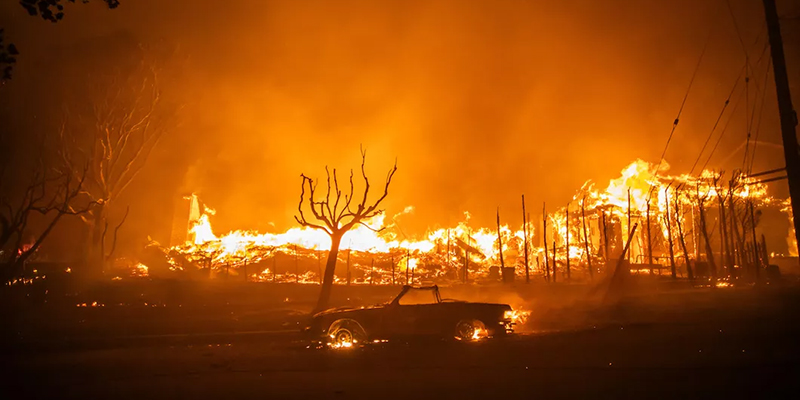
January 10, 2025
As wildfires spread across the Los Angeles area, local TV and radio stations have stepped up to provide crucial, real-time information, guiding their communities through a harrowing time. With the fires scorching thousands of acres and leaving devastation in their wake, residents have turned to these stations for evacuation updates, emergency instructions and vital safety information. Roadways are gridlocked as residents flee, with some abandoning vehicles as the fire grows dangerously close, underscoring the urgency of the crisis.
Journalists and crews behind the camera and mics have been reporting live from the frontlines, often working under extreme conditions as the fire continues to threaten homes, lives and businesses. Meteorologists have been providing critical weather updates, tracking the unpredictable winds that fuel the fire's spread. Firefighters and first responders are putting their lives on the line, braving the flames and intense heat to protect others and support recovery efforts. Together, these teams have been providing not only information but also hope, showing remarkable resilience in the face of this ongoing crisis. Their dedication underscores the strength and solidarity that bind communities together.
In Los Angeles, local TV and radio stations have been a lifeline during the wildfire crisis, with iHeartMedia's KFI-AM 640 among the first to report on the fire, thanks to a listener who called in early on January 7, alerting them of the smoke in Pacific Palisades.
"We were able to jump on it very quickly," Executive Vice President of News/Talk Programming Chris Berry told Inside Radio. "Our listeners are sometimes the very best reporters because they're eyewitnesses to the scene." KFI quickly went into wall-to-wall coverage, providing vital updates on evacuation orders, road closures and the fire's progress. Berry emphasized the importance of radio during such emergencies, noting, "A lot of these listeners did not have electricity in the middle of the night. There were 400,000 people without power, so they didn't have the internet… cell phone service was spotty, but they had a radio."
In response to the ongoing crisis, Audacy's KNX-AM has been quick to respond, providing continuous live coverage to ensure listeners stay informed. The KNX-AM team worked tirelessly, sending reporters into affected neighborhoods to share real-time updates. Among these reports were emotional interviews with residents returning home, uncertain if their houses had survived. One man, desperately trying to protect his home in Altadena, was seen cutting down palm trees as smoke and embers closed in on his neighborhood. Local TV and radio stations exemplify resilience, ensuring the public has the information they need during an overwhelming and uncertain time.
NPR affiliate LAist (KPCC) is also playing a key role in keeping the community informed by supplementing its coverage of the wildfires with audio from CBS News and Stations' KCAL-9 and KCBS-2. This collaboration allows LAist to provide real-time updates, including critical information on evacuation orders and road closures. The combined efforts of local TV and radio stations, working together seamlessly, ensure that residents have access to the essential updates they need to stay safe.
KTVU FOX 2 has also been actively reporting on the wildfires, providing updates on containment efforts, noting that nearly 2,000 structures have been destroyed and 130,000 people forced to evacuate. Their coverage includes evacuation orders, road closures and the ongoing efforts of firefighters to control the fires. KTVU's reporting underscores the severity of the situation and the challenges faced by both residents and emergency responders.
In the face of ongoing devastation, local TV and radio stations continue to be more than just sources of information – they are lifelines for a community in crisis. As fires ravage Los Angeles, these stations have stepped into action, providing a steady stream of updates and guidance to those who need it most. Their work goes beyond broadcasting facts; they deliver hope, compassion and a sense of unity at a time when the threat remains overwhelming.
In moments when fear and uncertainty grip the region, local TV and radio stations stand as pillars of support, embodying the resilience, strength and unwavering spirit of the community they serve. Their contributions not only inform but also inspire, showing what it means to be truly connected and committed to the safety and well-being of all.
More than 2.47 million American jobs depend on broadcasting, and the local broadcast radio and television industry - and the businesses that depend on it - generate $1.17 trillion annually for the nation's economy.